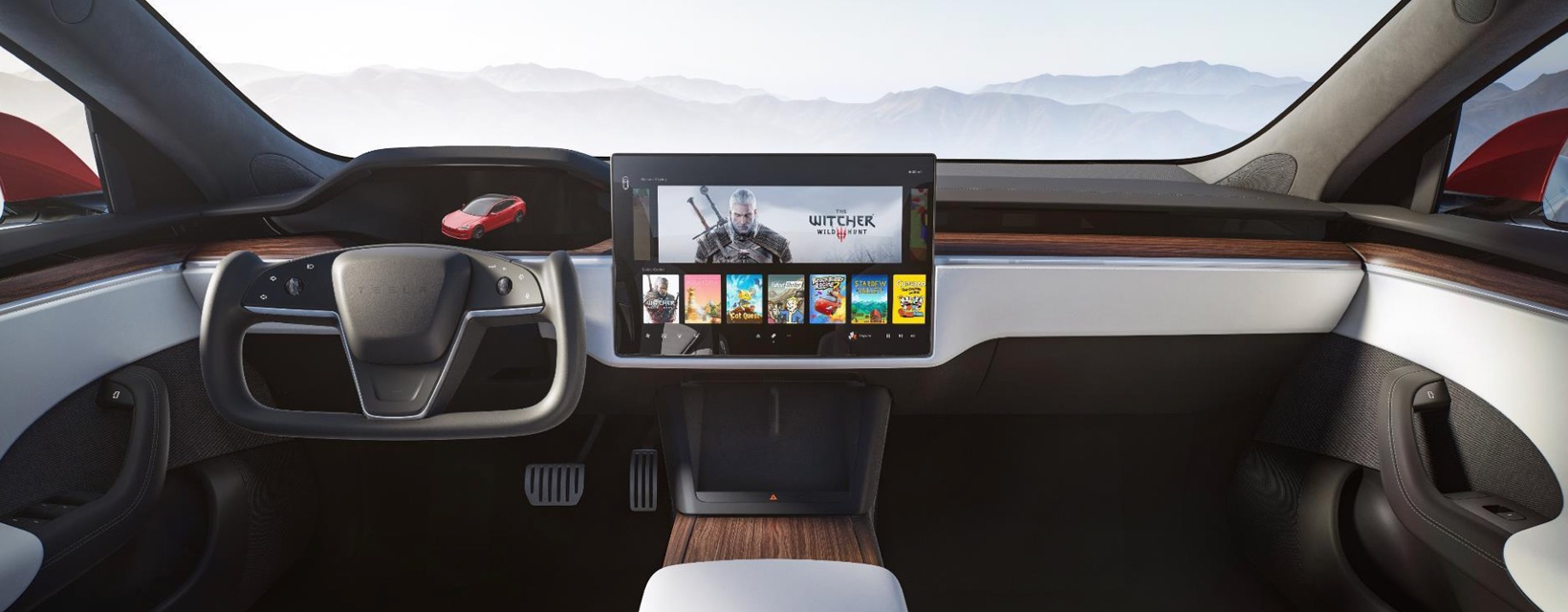The big picture is the shift to EVs, autonomy, and renewable energy will take longer than most think but will be more transformative in the end than most appreciate. This reality will undoubtedly create near-term volatility in shares of Tesla. In the end, we continue to believe these segments will be the foundation of the future of transportation and energy consumption and that this will increase Tesla’s market cap over the long term.
The December quarter
Tesla reported its sixth consecutive profitable quarter in December, anchored by 61% vehicle delivery growth, versus the broader auto industry down 5%. Here are our takeaways from the December quarter report:
- Delivery guidance: The company reiterated it’s 50% average annual delivery growth rate over a “multi-year horizon” and expects deliveries to grow greater than 50% in 2021. We estimate 2021 delivery growth will be closer to 70%, driven by the Model Y ramp in Shanghai, the beginning of vehicle deliveries from Giga Berlin, as well as favorable 2020 comps.
- Free cash flow of $1.9B, double analyst expectations and up from $1B in December 2019.
- Cash on hand now stands at $19.4B, up from $14.5B in September. We believe this represents ample cash to fund the company’s 50% compound delivery growth outlook for the next several years. Specifically, significant investments will be made in factory building, hiring manufacturing and engineering talent, and service center expansion.
- Auto gross margins were down sequentially in December to 20.7%, from 23.7% in September. At first take, this is a disappointment, as analysts had expected a slight increase in gross margin in the quarter. That said, the company added context during the earnings call, suggesting the dip was one time in nature driven by pandemic-induced inefficiencies.
- EPS of $0.80 fell well short of analyst expectations of $1.01. The miss was largely due to a jump in stock-based compensation to $633m in December, up from $400m in September, related to a 57% increase in TSLA share price during the December quarter.
- Energy generation and storage grew 72% in December, compared to 44% in September, and 18% in December 2019. While the segment is still small (~7% of total revenue), long-term we believe it has the potential to be 25% or more of the overall business. The challenge of growing this segment is that the auto segment is experiencing comparable growth rates; therefore, gaining as a percentage of revenue is difficult.
- Tesla Semi deliveries are expected to begin in 2021, marking the company’s entrance into the commercial trucking market. Long, predictable highway miles are ideal conditions for full autonomy. We believe Tesla’s long-term vision for its trucking segment is to sell semis and eventually offer a high-margin logistics and dispatch layer that would compete with traditional logistics companies like C.H. Robinson. The biggest, recurring constraint on Semi production will be battery cell availability. Semis require 5x more cells than a car, and the company is already cell constrained.
Topics central to 2021
Currently, Tesla’s financial results do not support its current $800B valuation. To do that, the company needs to continue to capture an outsized portion of the upcoming EV, autonomy, and energy generation and storage markets. We believe the following are the central topics to Tesla increasing its market cap in 2021.
Full Self-Driving (FSD)
We’re just scratching the surface on FSD. The company commented FSD will be available to the general Tesla fleet by the end of 2021. Over the past several years there’s been variability to Tesla’s FSD timing outlook. If FSD is available even two years later than the company believes, by the end of 2023, it would still be a significant step forward for Tesla and the broader shift to autonomy. Musk indicated on the earnings call that the first FSD vehicle will likely be Tesla Semi.
Robotaxi
We continue to believe Tesla will launch a chaperoned robotaxi in 2021. We believe regulatory approval in the US will take a couple of years. Until then, we expect Tesla to ease consumers into the future with a chaperoned robotaxi fleet. By the end of 2021, we believe FSD will be ready, and the earliest versions of Tesla’s robotaxi service will require a driver to accommodate the regulatory environment (think of it as an Uber driver in a Model 3 running FSD). In this scenario, drivers will benefit from reduced stress and fatigue, and Tesla will benefit by starting to build a ridesharing brand by easing riders into the robotaxi age with a human behind the wheel. Eventually, AVs will be approved, and Tesla, along with its third-party operators, can turn on its autonomous fleet. In the near-term, we don’t see this as a risk to Uber and Lyft, given the number of chaperoned vehicles in the Tesla fleet will not provide meaningful competition for the next couple of years.
New and updated models
The company believes Cybertruck and Tesla Semi will both be available in limited shipments by the end of this year. While it’s hard to believe the Austin factory, which recently broke ground, will be producing trucks by the end of the year, Tesla has already done the improbable by building Shanghai in about a year’s time. Our best guess is that both of these products will become available in early 2022.
In the near term, Model S and X will get their first major interior and exterior overhauls since 2012 and 2015, respectively. You’ll have to pay up for the new Model S, which has increased its base price by $10,000, to $80,000. Deliveries for the S will begin in February.
The Biden renewable energy plan
It’s unclear how Tesla will potentially benefit from Biden’s renewable energy initiatives. Our belief is by the end 2021, EV tax credits will become available again for Tesla purchases, along with subsidies for solar and battery home installations.
